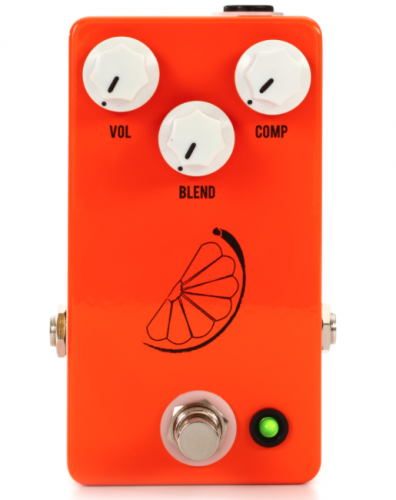
Miss the first two installments in this series? Check out Part 1 and Part 2 here.
Part 2 covered some basic compressor settings so in Part 3 I’ll go a bit deeper and show you ways to use your compressor you may not have considered. The main goal is to unlock the potential in the tools you have sitting right in front of you. Here’s a fresh perspective that will hopefully get your creativity working. I must reiterate, these settings are a good starting point. Everyone’s gear, hands, and ears will yield different results so start with these settings and tweak to taste. The gear I used for this is listed in Part 2. Let’s dial-in some sounds!
Clean Boost
- Attack – all the way up
- Sustain – 9:30
- Volume – to taste
Use this setting if you don’t want to hear the compression effect at all. A Blend control is helpful with this one.
On All the Time
- Attack – all the way up
- Sustain – 10:30
- Volume – unity gain or slightly above
With this setting you can truly leave your compressor on all the time; it gives a little extra sustain and smoothness. This sound benefits from a Blend control because you can tweak the subtlety of the effect.
Another use for this setting is in conjunction with a high-gain distortion sound. If your distortion is generated by the amplifier, plug the compressor into the input of the amp. If you’re using a pedal to create distortion, put the compressor before the distortion pedal in the signal chain. High amounts of distortion naturally create compression and using a compressor will add even more smoothness and fluidity to the sound.
Singing Low-Gain Overdrive
- Attack – 2 o’clock
- Sustain – 11 o’clock
- Volume – unity gain
Place your compressor in front of your overdrive pedal in the signal chain. To get a super-smooth, low-gain lead sound, reverse the order of the pedals in the signal chain and use the same settings. By putting the compressor after the overdrive, any top-end transients or low-end boominess gets compressed, giving an even response. With this signal chain, make sure that the overdrive pedal’s output is set to unity gain to keep the compressor from over-squashing. This sound works exceptionally well with the neck pickup.
Volume Swell
- Attack – all the way down
- Sustain – 3 o’clock or above
Use this setting to help sustain notes and chords that you’re swelling into and out of with a volume pedal or your guitar’s volume knob. Use the Volume control on your compressor to compensate for however slow and dramatic you want the swells to be; longer swells will need higher Volume settings. Add generous amounts of delay and reverb for the maximum effect.
As with all things guitar related, compressors are personal. Your playing style, gear, and usage will dictate which compressor works best for you. Your ears are your best guide to good tone.



